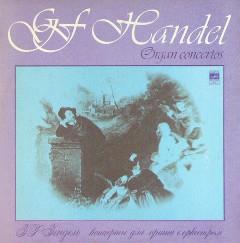Handel, J.S. Bach – Organ Concertos (1982)
Handel, J.S. Bach – Organ Concertos (1982)

George Handel - Organ Concertos Op. 4 Concerto 01 in G minor - 1-Larghetto e staccato Concerto 01 in G minor - 2-Allegro Concerto 01 in G minor - 3-Adagio Concerto 01 in G minor - 4-Andante Concerto 02 in B flat major - 1-A tempo ordinario e staccato Concerto 02 in B flat major - 2-Allegro Concerto 02 in B flat major - 3-Adagio e staccato Concerto 02 in B flat major - 4-Allegro ma non troppo Concerto 03 in G minor - 1-Adagio Concerto 03 in G minor - 2-Allegro Concerto 03 in G minor - 3-Adagio Concerto 03 in G minor - 4-Allegro Concerto 04 in F major - 1-Allegro Concerto 04 in F major - 2-Andante Concerto 04 in F major - 3-Adagio Concerto 04 in F major - 4-Allegro Concerto 05 in F major - 1-Larghetto Concerto 05 in F major - 2-Allegro Concerto 05 in F major - 3-Alla siciliana Concerto 05 in F major - 4-Presto Concerto 06 in B flat major - 1-Andante-allegro Concerto 06 in B flat major - 2-Larghetto Concerto 06 in B flat major - 3-Allegro moderato J.S. Bach - Organ Concerto No.2 in A minor, BWV 593 J.S. Bach - Organ Concerto No.4 in C major, BWV 595 Yevgeniya Lisitsina – organ The Latvian SSR State Philharmonic Society Chamber Orchestra Tovi Lifshitz (Tovijs Lifšics) – conductor The Riga Dom Organ, 1980
Handel's six organ concertos were published in 1738 by John Walsh as the composer's Opus 4. The four concertos HWV 290-293 had been written to be played in the intervals of performances of his oratorios Esther, Deborah and Athalia in March and April 1735 in the newly opened theatre of John Rich in Covent Garden; the other two concertos HWV 289 and 294 served the same purpose in February and March of the following year for performances at the same venue of Alexander's Feast HWV 75, Handel's setting of John Dryden's ode. They were the first works of their kind for this combination of instruments and served as a model for later composers.
Bach’s Concerto for solo organ No. 2 in A minor was in the early 1710s, in the middle of his days in Weimar, that J.S. Bach first became acquainted with Antonio Vivaldi's remarkable instrumental concertos; they would prove to have a tremendous influence not only upon Bach's own instrumental concertos, but also upon his style as a whole. One of the ways that Bach learned and absorbed new music was by making adaptations and transcriptions of it. So he did with many Vivaldi concertos during his Weimar residency, recrafting them, along with concertos by other composers, into series of concertos for harpsichord and for organ (in both cases without orchestral accompaniment). Bach's Concerto for organ No. 2 in A minor, BWV 593, is an arrangement -- or a condensation and refinement -- of Vivaldi's famous Concerto for two violins in A minor, RV 522, No. 8 -- from the volume L'estro armonico, Op.3, which first appeared in print in Amsterdam in 1711.
Manifestly, the reduction of a concerto for two soloists, strings, and basso continuo to a work for just two hands and pedals is a process that requires some alteration of the music. But Bach goes beyond simple necessity, and in fact tightens and enriches the very contrapuntal fabric of his source piece. BWV 593 is in three movements, the second of which Bach gives to the manuals alone. --- Blair Johnston, allmusic.com
Duke Johann Ernst of Saxe-Weimar, the young nephew of the aristocrat in whose chapel J.S. Bach was organist from 1708 to 1717, was also a keen music student who spent much time and energy improving himself as a player of the violin and as a composer. So it makes perfect sense that Bach, when he was arranging for solo organ six concertos by other composers (BWV 592 - 597, the last of which may be inauthentic), included two concertos composed by the Duke among his source works. (Sadly, the Duke died while still a teenager, so both his musical and his political powers remained essentially untapped.) The second of the organ concertos based on the Duke's music is the single-movement Concerto for organ No. 4 in C major, BWV 595; it takes a violin concerto in the same key by Duke Johann as its starting point, and is the shortest of the organ concertos (and the only one in a single movement). Ernst's original has not been found. The main ritornello theme is repetitive and simple, moving over the same few notes, and the episodes keep the same semiquaver rhythmic figure throughout the entire piece. The frequent manual changes, however, do hold the listener's interest. --- allmusic.com
download (mp3 @320 kbs):
yandex 4shared mega mediafire cloudmailru








